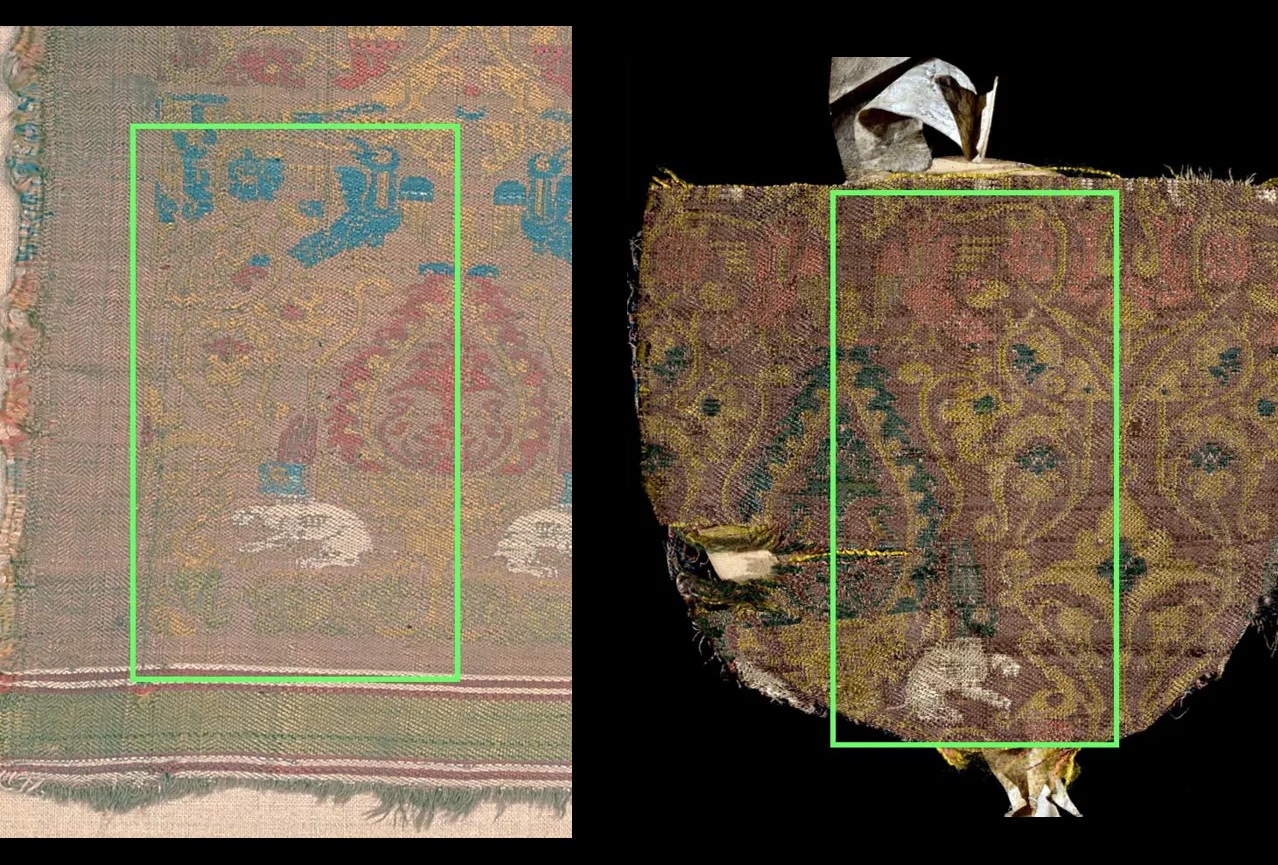Scholars examining a medieval silk seal bag displayed in the Queen’s Diamond Jubilee Galleries at Westminster Abbey have discovered that it matches the silk used in the burial shroud of Emperor Charlemagne.
Charlemagne was the Emperor of what is now known as the Carolingian Empire from AD 800 until his death in AD 814.
A member of the Frankish Carolingian dynasty, he united most of Western and Central Europe, and was the first recognised emperor to rule from the west after the fall of the Western Roman Empire. Charlemagne was laid to rest at Aachen Cathedral in Aachen, Germany.
Researchers from Westminster Abbey, the National Museums Scotland, and the Universities of Aberystwyth and Berne, have established that the silk used in the shroud is a perfect match for a medieval silk seal bag that dates from the reign of King Henry III.
The Abbey’s seal bag once housed the Great Seal of King Henry III, which was removed from Edward the Confessor’s shrine in AD 1267 during a financial crises and pawned to Italian merchants.
According to the researchers, the bag likely came from the same workshop, based on identical designs featuring white hares and floral patterns in faded gold, blue, and red.
“The silk used for Charlemagne’s shroud, formerly believed to have originated in Sicily, is now thought to have been spun in the 12th century, either in Spain or, more likely, the eastern Mediterranean. As it is a complete piece of cloth, the small piece at the Abbey originates from a separate silk but would have been produced by the same weavers on the same loom,” said the researchers.
Matthew Payne, the Abbey’s Keeper of Muniments, suggests that the silk may have been gifted by Henry III’s brother, Richard Earl of Cornwall, crowned Holy Roman Emperor in AD 1257.
Header Image Credit : Westminster Abbey
Sources : Westminster Abbey







